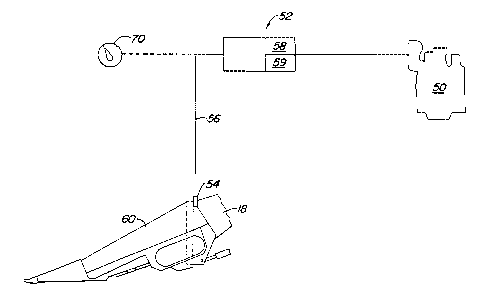Some of the information on this Web page has been provided by external sources. The Government of Canada is not responsible for the accuracy, reliability or currency of the information supplied by external sources. Users wishing to rely upon this information should consult directly with the source of the information. Content provided by external sources is not subject to official languages, privacy and accessibility requirements.
Any discrepancies in the text and image of the Claims and Abstract are due to differing posting times. Text of the Claims and Abstract are posted:
| (12) Patent: | (11) CA 2363210 |
|---|---|
| (54) English Title: | COMBINE ENGINE OUTPUT CONTROLLED BY HARVESTING ASSEMBLY |
| (54) French Title: | SORTIE DE MOTEUR A COMBUSTION DE MOISSONNEUSE-BATTEUSE REGULEE EN FONCTION DU GENRE DE RECOLTE |
| Status: | Expired and beyond the Period of Reversal |
| (51) International Patent Classification (IPC): |
|
|---|---|
| (72) Inventors : |
|
| (73) Owners : |
|
| (71) Applicants : |
|
| (74) Agent: | BORDEN LADNER GERVAIS LLP |
| (74) Associate agent: | |
| (45) Issued: | 2004-07-13 |
| (22) Filed Date: | 2001-11-16 |
| (41) Open to Public Inspection: | 2002-08-14 |
| Examination requested: | 2001-11-16 |
| Availability of licence: | N/A |
| Dedicated to the Public: | N/A |
| (25) Language of filing: | English |
| Patent Cooperation Treaty (PCT): | No |
|---|
| (30) Application Priority Data: | ||||||
|---|---|---|---|---|---|---|
|
The combine of the present invention is provided with an internal combustion
engine.
An electronic engine controller is used to monitor and control the operation
of the engine.
The electronic engine controller stores at least two power curves for
controlling the engine.
The first power curve has a higher horsepower output than the second power
curve. A
harvesting assembly detector signals the electronic engine controller with a
corn head signal
if a corn head is mounted to the combine, or a grain platform signal if a
grain platform is
mounted to the combine. If a corn head is mounted to the combine the
electronic engine
controller derates the engine and works on the second power curve. If the
electronic engine
controller receives a grain platform signal, the electronic engine controller
works on the
higher horsepower first power curve.
Note: Claims are shown in the official language in which they were submitted.
Note: Descriptions are shown in the official language in which they were submitted.

2024-08-01:As part of the Next Generation Patents (NGP) transition, the Canadian Patents Database (CPD) now contains a more detailed Event History, which replicates the Event Log of our new back-office solution.
Please note that "Inactive:" events refers to events no longer in use in our new back-office solution.
For a clearer understanding of the status of the application/patent presented on this page, the site Disclaimer , as well as the definitions for Patent , Event History , Maintenance Fee and Payment History should be consulted.
| Description | Date |
|---|---|
| Time Limit for Reversal Expired | 2007-11-16 |
| Letter Sent | 2006-11-16 |
| Inactive: IPC from MCD | 2006-03-12 |
| Grant by Issuance | 2004-07-13 |
| Inactive: Cover page published | 2004-07-12 |
| Inactive: Final fee received | 2004-04-30 |
| Pre-grant | 2004-04-30 |
| Notice of Allowance is Issued | 2003-11-03 |
| Letter Sent | 2003-11-03 |
| Notice of Allowance is Issued | 2003-11-03 |
| Inactive: Approved for allowance (AFA) | 2003-10-21 |
| Amendment Received - Voluntary Amendment | 2003-03-19 |
| Application Published (Open to Public Inspection) | 2002-08-14 |
| Inactive: Cover page published | 2002-08-13 |
| Inactive: IPC assigned | 2002-01-21 |
| Inactive: First IPC assigned | 2002-01-21 |
| Letter Sent | 2001-12-21 |
| Filing Requirements Determined Compliant | 2001-12-21 |
| Inactive: Filing certificate - RFE (English) | 2001-12-21 |
| Letter Sent | 2001-12-18 |
| Application Received - Regular National | 2001-12-18 |
| Request for Examination Requirements Determined Compliant | 2001-11-16 |
| All Requirements for Examination Determined Compliant | 2001-11-16 |
There is no abandonment history.
The last payment was received on 2003-11-14
Note : If the full payment has not been received on or before the date indicated, a further fee may be required which may be one of the following
Please refer to the CIPO Patent Fees web page to see all current fee amounts.
| Fee Type | Anniversary Year | Due Date | Paid Date |
|---|---|---|---|
| Registration of a document | 2001-11-16 | ||
| Application fee - standard | 2001-11-16 | ||
| Request for examination - standard | 2001-11-16 | ||
| MF (application, 2nd anniv.) - standard | 02 | 2003-11-17 | 2003-11-14 |
| Final fee - standard | 2004-04-30 | ||
| MF (patent, 3rd anniv.) - standard | 2004-11-16 | 2004-11-04 | |
| MF (patent, 4th anniv.) - standard | 2005-11-16 | 2005-11-02 |
Note: Records showing the ownership history in alphabetical order.
| Current Owners on Record |
|---|
| DEERE & COMPANY |
| Past Owners on Record |
|---|
| KEVIN LAVERNE EHRECKE |